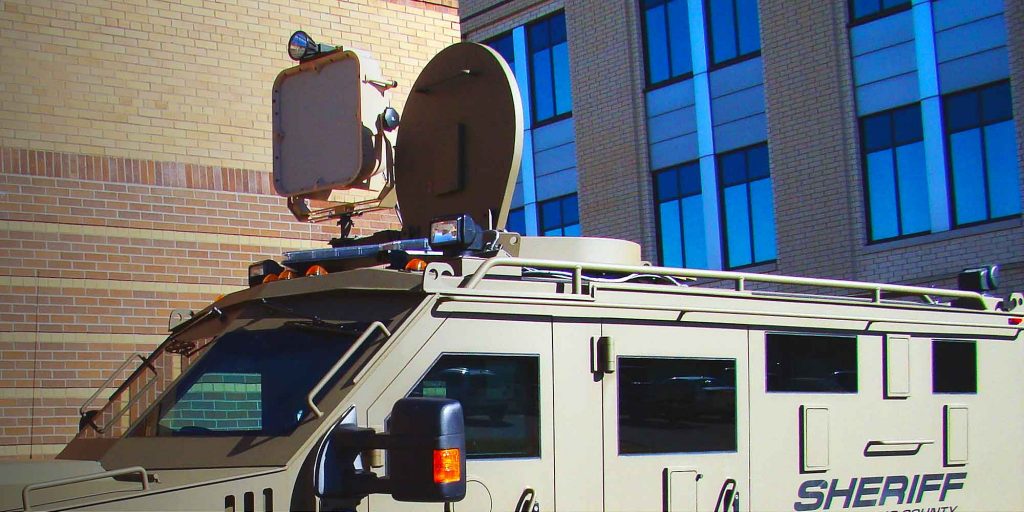Today we will look at another issue involving crowd control and management – use of LRADs – Long Range Acoustical Devices. This case comes from New York City where LRAD was used to disperse a crowd. As a result, protesters filed suit claiming the police violated their Fourteenth Amendment right against excessive force when they used the LRADs. Let’s see what the 2nd Circuit had to say on this subject.
FACTS
In December 2014, protests broke out across New York City after a grand jury refused to indict a police officer following the in-custody death of Eric Garner. During the early morning hours, demonstrators blocked off Madison Avenue and officers moved in to make arrests. A crowd of observers gathered but did not interfere with the arrests. Shortly thereafter, officers dispersed pepper spray and then the plaintiff and others heard a high-pitched alarm pulsing through the streets. Members of the NYPD Disorder Control Unit began broadcasting an order to disperse and most of the crowd began fleeing the area. The officers following the crowd continued to activate the 100X Model Long Range Acoustic Device (“LRAD”).
In the days and weeks following the protest, the plaintiffs reported physical injuries that included ear pain, prolonged migraines, and “extreme difficulty with hearing”. One plaintiff alleged his doctor informed him he had suffered nerve damage in his ear as a result of the noise pressure caused by the LRAD.
The plaintiffs filed a complaint alleging claims under the 1st, 4th, and 14th amendments as well as several state tort claims. The defendant officers and City of New York filed a Motion to Dismiss claiming that the officers were entitled to Qualified Immunity. The District Court denied the motion, in part, finding that “the use of the Model 100X as a projector of powerfully amplified sound is no different than other tools in law enforcement’s arsenal that have the potential to be used either safely or harmfully, such as a stun grenade.” The court went on to explain that there was ample information and case law informing officers on the safe use of these types of devices and the hazards that could occur if used improperly. The defendants then filed this appeal to the 2nd Circuit.
2nd Circuit Finding
Interestingly, the issue on appeal is not a question of excessive force under the typical 4th Amendment standard. Rather, the excessive force claim in this case is
couched in the rubric of a 14th Amendment Due Process claim. Some officers may recall that prior to Graham v Connor, all uses of force were reviewed under the “shocking to the conscience” test outlined in Johnson v Glick. The 4- part test in Glick was modified by the US Supreme Court in a 2015 case – Kingsley v Hendrickson. The bottom line is that an excessive force claim can still be brought under the 14th Amendment alleging a Due Process violation.
So, how do the facts alleged in the complaint make a claim for a 14th Amendment Due Process violation?
On the first Kinglsey element the 2nd Circuit determined that the security problem was minimal and the threat perceived by the officers was “minimal”. Under these conditions the situation “did not warrant such a significant use of force”.
The next element evaluates the “proportionality” of force used. In other words, is there a balance between the threat posed and the degree of force used. In this regard, the 2nd Circuit determined that exposing the demonstrators to the “dangerous volume” of the LRAD was a “severe consequence” for blocking traffic.
Finally, the appellate court concluded that the injuries alleged by the plaintiffs “fit comfortably” into the spectrum of injuries that are sufficient to support a claim under the 14th Amendment. Affirming the trial court’s denial of the motion, the 2nd Circuit concluded that the use of the LRAD’s area denial function was disproportionate to the activity at hand and was an “exercise of power without any reasonable justification of a legitimate governmental purpose.”
WRAP UP
This case has a long way to go. But there are several points worth noting:
First, this case comes on the heals of a similar case involving the City of Pittsburgh. In Piper v City of Pittsburgh, Karen Piper claimed she suffered hearing loss after officers activated an LRAD during the G-20 demonstrations. In 2012 the City settled with Piper for $75,000.00 and settled other suits that totaled $200,000.00.
Second, both the Plaintiff’s complaint and the 2nd Circuit opinion contain references to the LRAD user’s manual and the many restrictions and cautions contained in the manual.
If your agency is going to deploy this type of equipment then it is important to draft clear directives that outline the proper use of the equipment in conformance with industry standards and the manufacturer’s directions and cautions.
